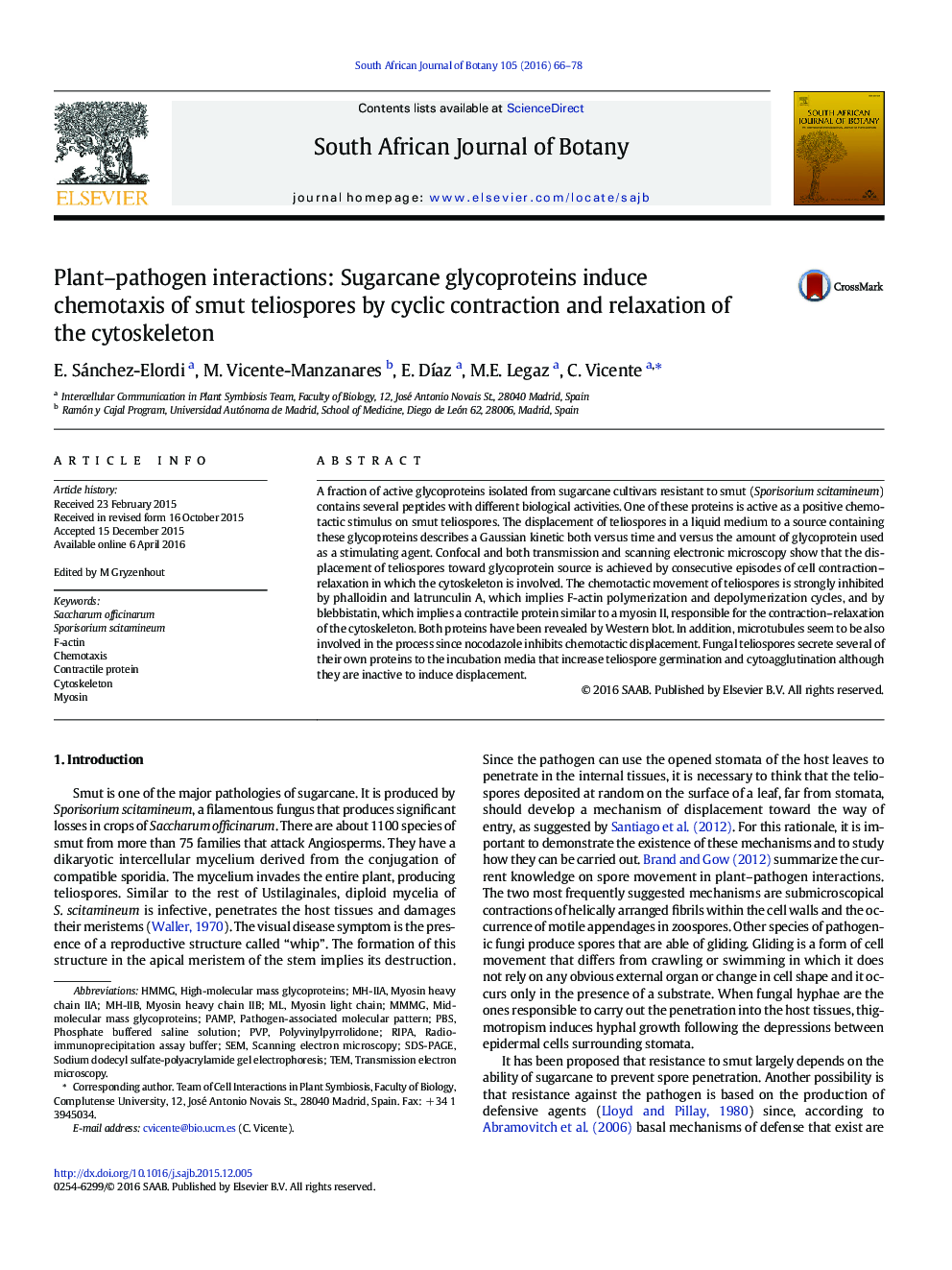| کد مقاله | کد نشریه | سال انتشار | مقاله انگلیسی | نسخه تمام متن |
|---|---|---|---|---|
| 4520103 | 1625153 | 2016 | 13 صفحه PDF | دانلود رایگان |
• Glycoproteins from sugarcane cv. resistant to smut are active inducing teliospore germination, cytoagglutination and as positive chemotactic stimuli on fungal teliospores.
• The chemotactic movement of teliospores is strongly impeded by inhibitors of actomyosin complex.
• An actin of 50 kDa of molecular mass, as well as A and B heavy, and light chain of myosin II from smut teliospores have been revealed by Western blot.
• Teliospore cytoskeleton is involved in the chemotactic displacement by consecutive contraction–relaxation episodes.
• Secreted proteins from teliospores promote germination and cytoagglutination but never chemotactic movement.
A fraction of active glycoproteins isolated from sugarcane cultivars resistant to smut (Sporisorium scitamineum) contains several peptides with different biological activities. One of these proteins is active as a positive chemotactic stimulus on smut teliospores. The displacement of teliospores in a liquid medium to a source containing these glycoproteins describes a Gaussian kinetic both versus time and versus the amount of glycoprotein used as a stimulating agent. Confocal and both transmission and scanning electronic microscopy show that the displacement of teliospores toward glycoprotein source is achieved by consecutive episodes of cell contraction–relaxation in which the cytoskeleton is involved. The chemotactic movement of teliospores is strongly inhibited by phalloidin and latrunculin A, which implies F-actin polymerization and depolymerization cycles, and by blebbistatin, which implies a contractile protein similar to a myosin II, responsible for the contraction–relaxation of the cytoskeleton. Both proteins have been revealed by Western blot. In addition, microtubules seem to be also involved in the process since nocodazole inhibits chemotactic displacement. Fungal teliospores secrete several of their own proteins to the incubation media that increase teliospore germination and cytoagglutination although they are inactive to induce displacement.
Journal: South African Journal of Botany - Volume 105, July 2016, Pages 66–78
